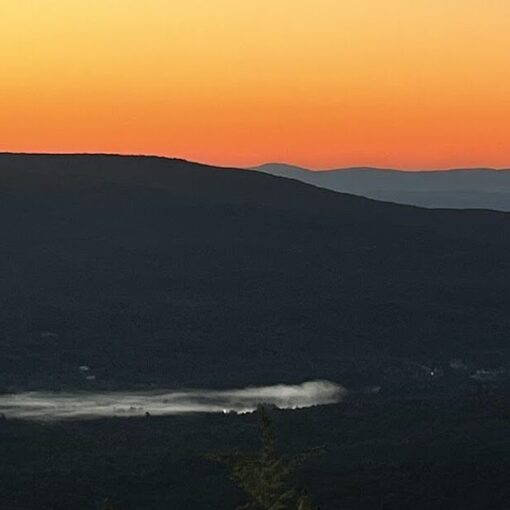New updates to the Center for Climate Change Law and Arnold & Porter Climate Case Chart. Find the complete chart here.
FEATURED DECISION
In re Polar Bear Endangered Species Act Litigation (D.C. Cir. March 1, 2013): added to the “Endangered Species Act” slide. The D.C. Circuit upheld the U.S. Fish and Wildlife’s “threatened” designation given to polar bears under the Endangered Species Act as a result of climate change, holding that the FWS engaged in reasonable decision-making and adequately explained the scientific basis for its decision. In May 2008, the FWS listed the polar bear as threatened under the ESA. In June 2011, a federal district court in the District of Columbia dismissed challenges to the listing of the polar bear as a threatened species under the Endangered Species Act. Environmental groups had sued to have the bear classified as endangered, a more protective classification, while Alaska, hunting groups, and others had asked the court to block any listing. The D.C. Circuit, deferring to the U.S. Fish and Wildlife Service, which made the determination, held that plaintiffs failed to demonstrate that the agency acted irrationally in making its listing decision, noting that the agency considered more than 160,000 pages of documents and over 670,000 comment submissions before making its final decision.
DECISIONS AND SETTLEMENTS
Concerned Dublin Citizens v. City of Dublin (Cal. Ct. App. March 7, 2013): added to the “state NEPAs” slide. A citizen’s group challenged the City of Dublin’s determination that a proposed development within a larger transit center development was exempt from the preparation of an Environmental Impact Report (EIR) under the California Environmental Quality Act (CEQA) because a previous EIR had been prepared and certified in 2002. The plaintiff alleged that supplemental environmental review was necessary because new information concerning GHG emissions has come to light since the EIR was certified in 2002. The trial court disagreed, holding that GHG emissions thresholds adopted by the Bay Area Air Quality Management District in 2010 constituted new information requiring additional environmental review given that the potential environmental effects of GHG emissions were known at the time the 2002 EIR was certified. On appeal, the appellate court affirmed on similar grounds.
Creed-21 v. City of Glendora (Cal. Ct. App. Feb. 19, 2013): added to the “state NEPAs” slide. A community group filed a lawsuit challenging the City of Glendora’s approval of an expansion of an existing Wal-Mart store. Among other things, the lawsuit alleged that the city violated CEQA by preparing an EIR that did not adequately analyze the project’s greenhouse gas emissions and climate change impacts. The trial court denied the petition, holding that the EIR did properly evaluate the project’s GHG emissions and climate change impacts. On appeal, the appellate court affirmed, holding that proposed mitigation measures concerning the use of alternative modes of transportations to reduce GHG emissions were too speculative and did not have to be considered.
North Dakota v. Heydinger (D. Minn. Feb. 15, 2013): added to the “challenges to state action” slide. A federal district court affirmed a magistrate judge’s order denying several environmental groups’ motion to intervene in an action concerning a Minnesota law designed to reduce GHG emissions, holding that the groups could not intervene given that they could not demonstrate a sufficient interest in the outcome of the case and that generalized interests in the reduction of carbon dioxide emissions were not enough to confer standing. In the underlying lawsuit, North Dakota alleges that Minnesota’s Next Generation Energy Act, which took effect in 2009 and prohibits the importation of power from any new large energy facility that would contribute to state-wide carbon dioxide emissions, violates the Commerce Clause and the Supremacy Clause. According to the lawsuit, the law defines power sector carbon dioxide emissions to include carbon dioxide emitted from the generation of electricity generated outside of Minnesota but consumed in the state.
WildEarth Guardians v. BLM (D.D.C. Feb. 13, 2013): added to the “NEPA” slide. A federal district court in the District of Columbia granted the Bureau of Land Management’s motion to transfer a case involving challenging coal leases to Wyoming, holding that the case could have been brought in Wyoming and public interests weighed decisively in favor of transfer. The plaintiffs, several environmental groups, filed a lawsuit against BLM alleging that the agency’s authorization of four large coal leases in the Power River Basin without fully analyzing the climate change impacts of increased carbon dioxide emissions violated NEPA. According to the complaint, collectively, the four leases have the potential to produce more than 1.8 billion tons of coal, resulting in over three billion metric tons of carbon dioxide emissions.
NEW CASES, MOTIONS AND NOTICES
WildEarth Guardians v. Klein (D. Colo., filed Feb. 27, 2013): added to the “NEPA” slide. An environmental group commenced a lawsuit seeking to halt coal mining operations in four Western states because of alleged violations by the Department of Interior (DOI) in approving the mines. In particular, the lawsuit alleges that DOI’s Office of Surface Mining Reclamation and Enforcement approved plans for mining on federally owned lands without providing an opportunity for public comment and without fully analyzing their direct and indirect environmental impacts, including impacts associated with coal transport and combustion, pursuant to NEPA. Several of the mines included in the complaint are located in the Powder River Basin, which contains some of the largest deposits in the world of low-sulfur subbituminous coal, which is used for electric power generation. Developers of several planned terminals in the Pacific Northwest are currently seeking federal regulatory approval to export to Asia coal mined from federal land in the basin.
Native Village of Kivalina v. ExxonMobil Corp. (U.S., filed Feb. 25, 2013): added to the “common law claims”
slide. An Alaskan Village whose village is threatened by climate change filed a petition for certiorari with the U.S. Supreme Court seeking a review of a Ninth Circuit’s decision finding that its lawsuit seeking damages under state common law was displaced by the Clean Air Act. The lawsuit alleged that as a result of climate change, the Arctic sea ice that protects the Kivalina coast from storms has been diminished and that resulting erosion will require relocation of the residents at a cost of between $95 and $400 million. In 2009, a federal district court in California dismissed the village’s lawsuit against 24 oil, energy and utility companies, holding that the question of how best to address climate change is a political question not appropriate for a federal trial court to decide. The court also held that the plaintiffs could not demonstrate that the companies had caused them injury. In September 2012, the Ninth Circuit affirmed the dismissal, holding that plaintiffs could not sue under a theory of public nuisance given that it had been displaced by the Clean Air Act.
Conservation Law Foundation v. Dominion Energy (D. Mass., filed Feb. 22, 2013): added to the “coal-fired power plants challenges” slide. Several environmental groups filed a citizen suit alleging that the owner of a coal-fired power plant violated the Clean Air Act, including monitoring requirements for carbon dioxide. According to the complaint, the alleged violations are based on the company’s filings with the Massachusetts Department of Environmental Protection, including quarterly excess emissions reports, permit deviation reports, and semiannual and annual compliance reports.
Grocery Manufacturers Association v. EPA (U.S., filed Feb. 21, 2013): added to the “challenges to federal action” slide. Several industry groups filed a motion for certiorari with the U.S. Supreme Court concerning a decision by the D.C. Circuit that the groups lacked standing to challenge EPA waivers that increases the amount of ethanol allowed in gasoline for newer automobiles. In the lawsuit, the groups challenged EPA’s decision to grant a waiver allowing more ethanol in fuel for 2007 and newer vehicles, alleging that the agency exceeded its authority under the Clean Air Act. The decision raises from 10 percent to 15 percent the maximum ethanol level in gasoline used in these vehicles. In August 2012, the D.C. Circuit dismissed the lawsuit on standing grounds, holding that none of the industry groups that challenged the decision could show that they were harmed by the rule given that the waivers did not directly impose regulatory restrictions, costs, or other burdens on any of the groups.
Center for Biological Diversity v. California Department of Conservation (Cal. Super. Ct., filed Jan. 24, 2013): added to the “challenges to state action” slide. Several environmental groups commenced a lawsuit against the California Department of Conservation (CDEC) alleging that the state has failed to properly oversee hydraulic fracturing operations. According to the complaint, the state’s Underground Injection Control program requires a division of CDEC to regulate oil and natural gas fracking operations. The lawsuit seeks to prohibit hydraulic fracturing of oil and natural gas wells until CDEC takes steps to regulate the wells and ensure that the operations pose no risks to public health or the environment.



